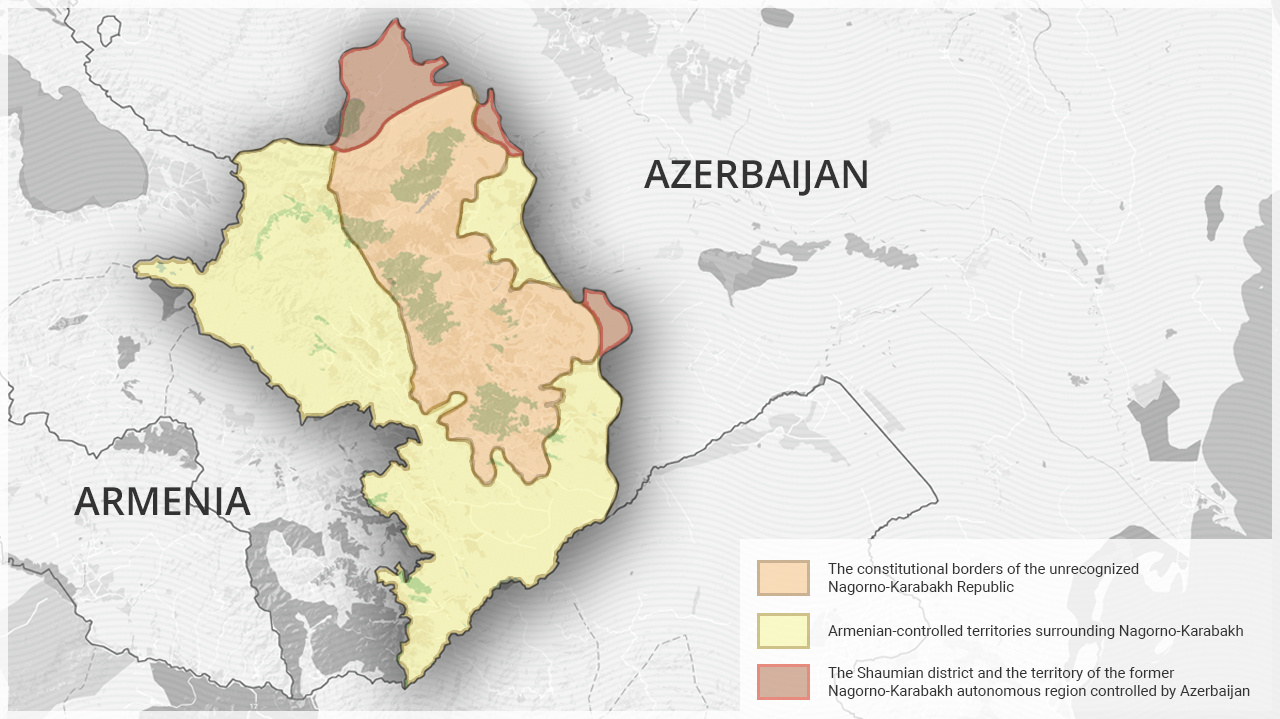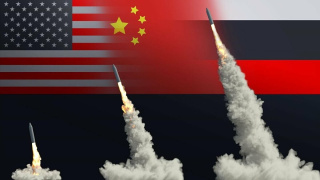The Art of the Possible: Armenia and the New Eurasian Alliance
On Wednesday, Moscow will host a meeting between Russian President Vladimir Putin and Armenian President Serge Sargsyan. This event is supposed to conclude a series of high-level meetings with the participation of the Russian leader designed to bring the Eurasian integration process to a whole new level by including Azerbaijan, Iran, and Turkey. The day before the meeting with Sargsyan, Putin met with Turkish President Erdogan, and before that with the leaders of Azerbaijan and Iran, Aliyev and Rouhani.
The joint projects and agreements achieved in Baku and St. Petersburg require coordination with the countries already involved in the integration process. In particular this applies to Armenia. This country has traditionally difficult relations with Turkey and Azerbaijan. For Russia, it is imperative to keep Armenia in the Eurasian Union, make Azerbaijan’s membership possible, and engage Turkey all the while. But this is impossible without at least a partial solution to the Karabakh issue. In the long term, Yerevan must also be interested in the involvement of Azerbaijan and Turkey in the Eurasian integration process.
Participation in the common integration space reduces the possibility of the resumption of a full-scale conflict by establishing new mechanisms for the resolution of disputes. In the long term, deepening integration and removing border barriers, along with the creation of common economic, cultural, and political spaces, removes the very basis of conflict. Border regions in tense places can be transformed into intense interaction fields. Despite all of the shortcomings of the EU, the idea of eliminating long-standing enmity and conflict between France and Germany through the formation of common integration structures has shown its efficiency.
Armenia and Azerbaijan’s membership in the EAEC would also open up prospects for the full inclusion of Nagorno-Karabakh in the pan-Eurasian economic space and its legal registration under, for example, the status of a “Eurasian region”, a special entity within a single space. Integration would create a new supranational legal and political field, the very existence of which would increase the span of possibilities which the two countries’ politicians interested in finding mutually beneficial solutions to particular problems would have.
If Armenian politicians are interested in long-term peace, the cessation of the economic isolation of Karabakh, and the tranquility and well-being of its citizens, then they must agree to the Eurasian initiative of Russia on including Azerbaijan in the EAEC. Of course, this requires some concessions on their part. The so-called “Lavrov plan” has been put forth by Russia which entails transferring seven regions of Azerbaijan occupied by Armenian forces and the NKR army back from Armenia to Azerbaijan. The Eurasian future of Azerbaijan depends on Armenia accepting this plan.
The so-called "Safety Belt" of NKR covers the territory of Kalbajar, Lachin, Kubatly, Jabrail, Zangelan, most of Agdam, and 30% of the Fizuli regions of Azerbaijan. These areas were occupied by Armenian forces during the war in Nagorno-Karabakh. The UN Security Council has repeatedly qualified Armenian control over these areas as occupation (UN Security Council Resolution number 822 of April 30, 1993, UN Security Council Resolution number 853 of 29 July 1993, the UN Security Council Resolution number 874 October 14, 1993, UN Security Council Resolution number 884 November 12, 1993). According to the Constitution of the Nagorno-Karabakh Republic, these areas are not part of Nagorno-Karabakh.
Of course, such a compromise is a painful step for the Armenian side, but it is necessary for long-term peace in the region. In addition, the status of the actual territory of Nagorno-Karabakh is not being discussed. Finally, Armenia can raise the issue of the demilitarization of these five areas as the main condition of their transfer to Azerbaijan, thereby dispelling the well-founded fear that NKR’s security would be weakened after this step.
After Putin and Erdogan’s meeting in St. Petersburg, Armenia is entitled to demand serious preferential treatment from Russia as well as from Turkey and Azerbaijan in exchange for concessions on Karabakh. This particularly applies to Russian and Turkish investments and opening the border between Turkey and Armenia, a step which would revive the Armenian economy. Turkey, according to our information, is ready to open its side of the border.
At the same time, Iran’s joining the Karabakh settlement process and Iran's active cooperation as part of the Moscow-Baku-Tehran triangle is designed to put pressure on Azerbaijan, in particular compelling it to abandon plans to return the Karabakh by the use of force. Iran is a traditional ally of Armenia. Russia guarantees the security of Armenia as a CSTO member and as a Christian power. Both countries are ready to defend their national interests, the security of Yerevan, and the balance of power in the region. Thus, the Moscow-Ankara-Baku and Moscow-Yerevan-Tehran axes will complement and balance each other while focusing on a single goal: pacifying the South Caucasus as a guarantee for the stability of the powerful Russian-Turkish-Iranian Eurasian bloc opposed to US hegemony.
From the standpoint of Armenia’s interests, no real alternative to adopting the "Lavrov plan" exists. However, in order to try to drag Armenia out of Russia’s zone of influence, pro-American forces have employed and will continue to hurl accusations that such a relationship sacrifices Armenian interests. This was shown by the recent events surrounding the seizure of a police station in Yerevan. A possible anti-Russian turn of Armenia would be fraught with disaster for the country.
Conflict with Russia, towards which pro-Western nationalists are dragging the country, the rejection of the Russian peace plan and, accordingly, the loss of Russia’s support for the country could provoke Azerbaijan to solve the Karabakh issue by force. In terms of number of weapons and personnel strength, the Azerbaijani army is utterly superior to the armed forces of Armenia. Turkey’s potential support for Azerbaijan should also be taken into account. Even if Armenia will defend Karabakh (which is not guaranteed), the Armenian people would suffer enormous and irreparable losses.
An alliance with the West will not save Armenia, especially given the reluctance of Georgia to quarrel with Azerbaijan and Turkey and the latter’s support for the territorial integrity of Azerbaijan. Without Georgia, Armenia would be caught in a hostile ring. Just to what extent the US actually supports its allies was revealed in Georgia’s experience, which not too long ago lost South Ossetia and Abkhazia. The US needs a conflict in the South Caucasus which can affect Russia and Turkey. But it does not need an Armenian victory.
Politics is the art of the possible. The limits of what are possible for Armenia are currently quite restricted. A choice stands before the Armenian leadership. They must either realize their long-term interests through integration into the global Eurasian strategy, or face war and chaos in the wake of the Atlanticists.













